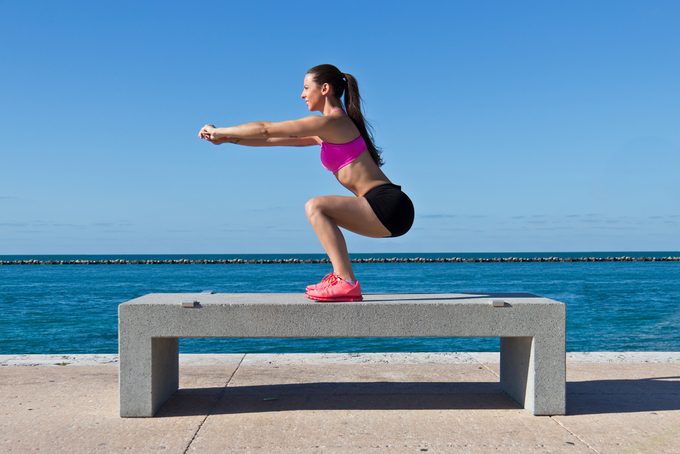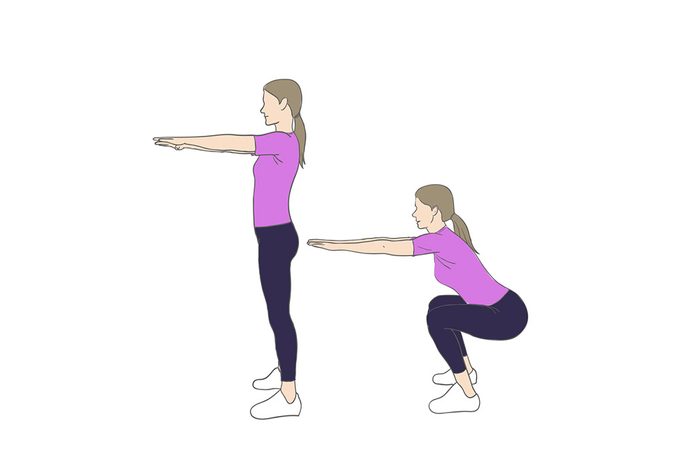How To Master Squats (The Right Way)
Don’t be afraid of the dreaded squat.

Squats 101
It may not be your style to strut around in a string bikini, but that’s no reason to neglect your behind. The muscles there include the gluteus maximus, minimus and medius, but it’s the maximus that gives shape to the butt. Not only is it the largest muscle in the human body, it’s involved in almost every movement you make-so it’s important to keep it strong and stable, whether you’re chasing your best time in a triathlon or your kids at the playground. The best way to strengthen your butt? Squats.
“Squats allow you to work your glutes at the same time that you’re working other muscles,” says Amanda Vogel, a certified fitness instructor at FitCity for Women in Vancouver. “And you’re moving your body as it’s prone to move in everyday life.” Once you’ve mastered them, add a jump for an extra power kick, or do squats on a BOSU ball to work on balance.
Why You Should Do More Squats
• You’ll get more from your workout; squats target several lower-body muscles at once, including the quadriceps and hamstrings.
• You’ll improve your balance and stability.
• You’ll kick up your heart rate.
• You’ll burn lots of calories.
Squats: The Basics
Do a set of squats three times a week, making sure to take a day’s rest in between. Begin with one set of 15 to 20 repetitions, then work your way up to two or three sets. Once you’ve mastered the basic squat, add some dumbbells or a barbell. When you do, you may need to go back to doing one set or decrease the number of reps to eight to 12.

Maintain Form
The keys to a successful, pain-free squat are alignment and posture. Keep your chest and head up, and don’t let your knees go past your toes when you’re bending into the squat. Another factor is the hip flexor muscles, which offer resistance to the glutes: It’s common for hip flexors to be tight and short, causing the glutes to lengthen and weaken. Correct the imbalance between the two muscles by regularly stretching the hip flexors and working the glutes.
Workout Instructions
- Stand in front of a chair with your feet hip width apart. Keep your body erect and your chin raised slightly throughout this exercise.
- Slowly lower your hips toward the chair as if you’re about to sit. Just before your body touches it, return slowly to a standing position. Don’t arch or round your back-keep it in a straight line-and keep your knees behind your toes, your weight centred over the middle of your feet and heels (not over your toes), and your feet flat on the floor. As you squat, press into your heels to involve your hips and back.
Tip: If you need help with balance or flexibility, place a small board, 1/2 to 1 inch (1 to 2.5 cm) thick, under your heels.
Step it up: Remove the chair and lower your hips until the tops of your thighs are parallel to the floor-never farther. As you get stronger, increase resistance by holding dumbbells at your sides or in front of your chest.
Variations: Try it against a wall. Or, once you’ve mastered the squat, try it on one leg and alternate.




